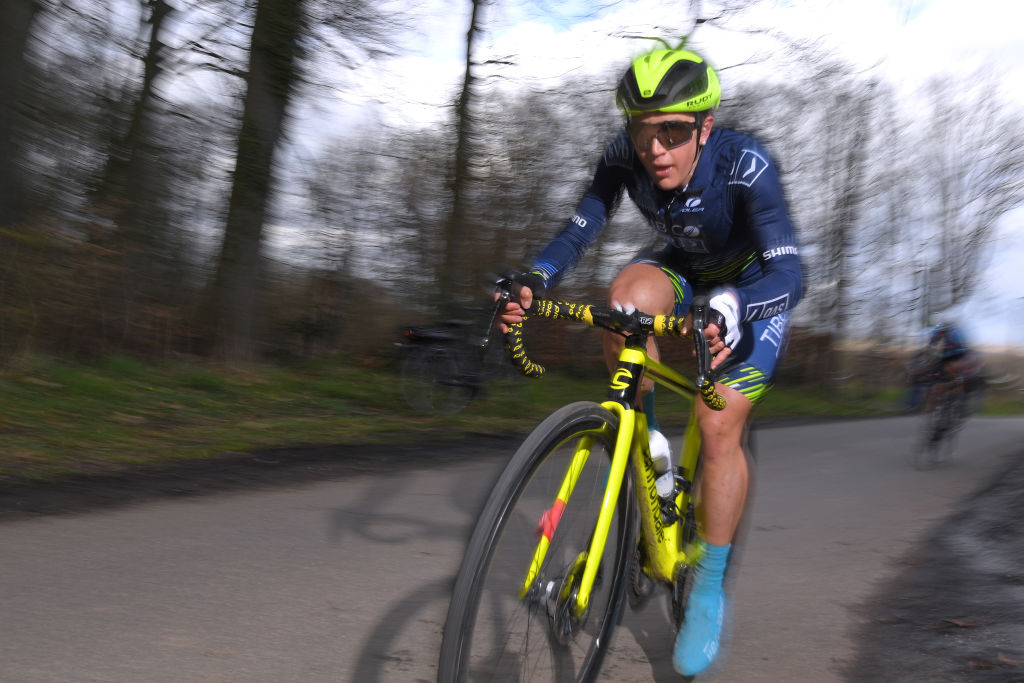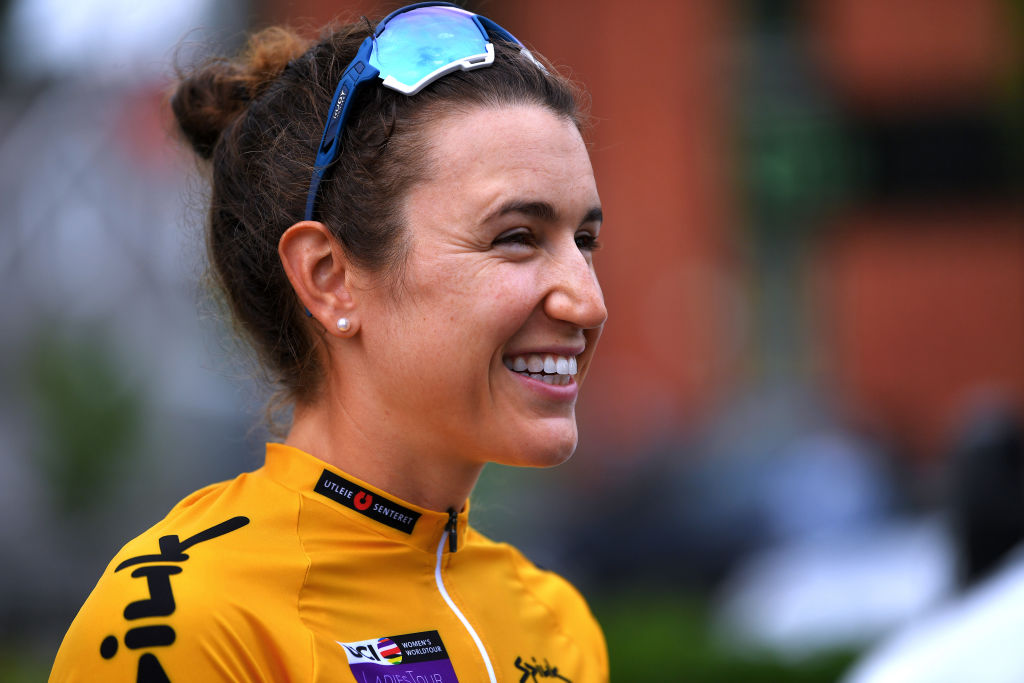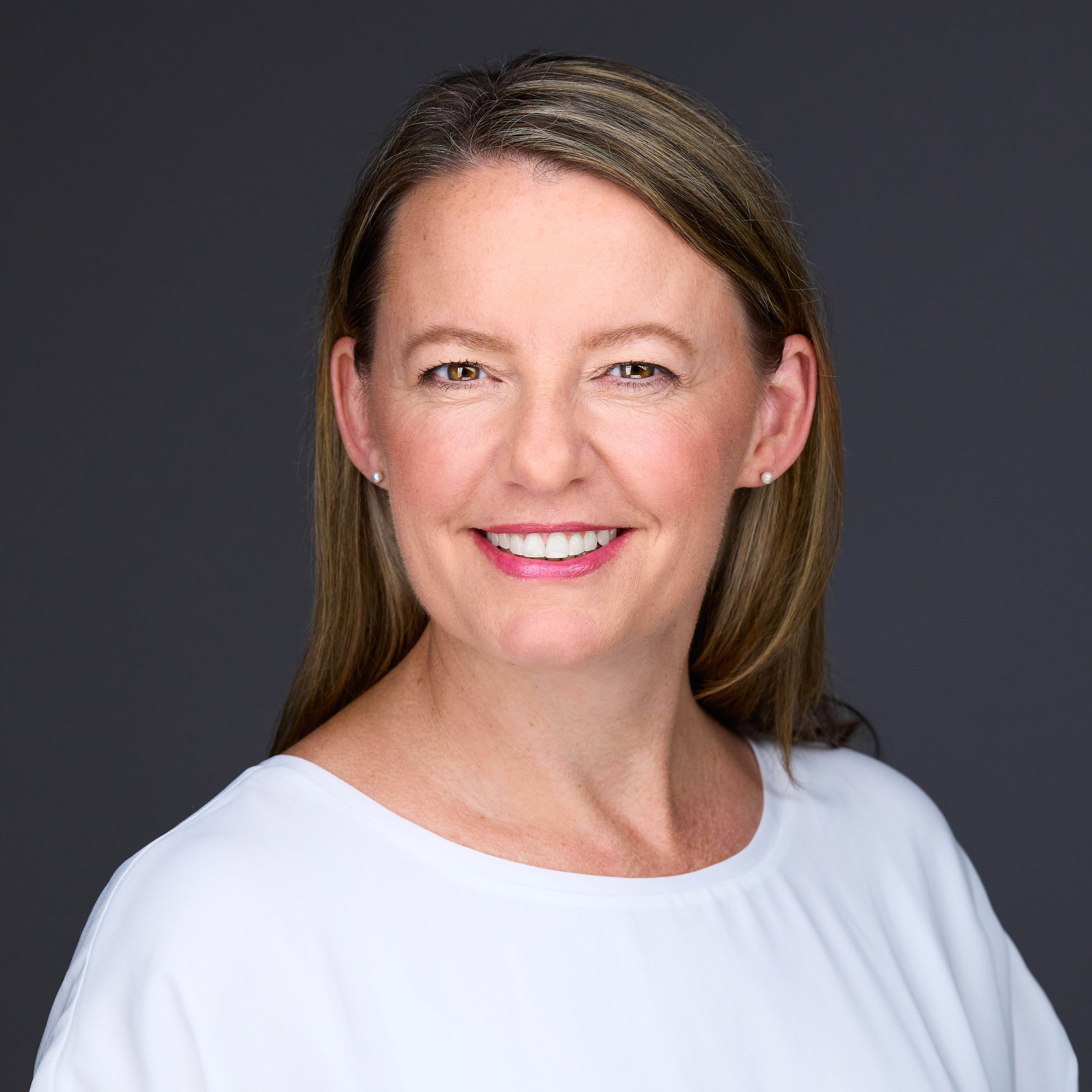Kristen Faulkner: Finding economic synergies in cycling
Venture capitalist turned pro cyclist discusses how men's and women's cycling can benefit from shared spaces

Kristen Faulkner (Tibco-Silicon Valley Bank) is one of the newest faces in professional cycling. She swapped a successful career as a venture capitalist to pursue her dreams of competing in the biggest races in the world, just completing her first full season of racing abroad.
In an interview with Cyclingnews, Faulkner offered insight on the importance of long-term investment in women's cycling, the willingness to take on risk and finding overlapping synergies between the men's and women's sides of the sport to support overall growth and profitability.
Faulkner, 28, has worked for two venture capitalist firms in New York and California. She described her role as the only non-partner at a venture capitalist firm that made roughly $5 million to $10 million investments in early-stage technology companies similar to Pinterest, Skype, Hotmail, Facebook, and Google.
"These companies all started with ten employees at some point. These were the type of tech investments that we made. My job was to find these companies, speak with the entrepreneurs and conduct financial, competitive and market due diligence. I would go through all of this material, have meetings with the CEOs and founders, and ultimately decide if it was an investment we wanted to make," Faulkner said. "There was a negotiation process for how much we wanted to invest, for what equity, and things like that."
It may, on the face of it, seem a world apart from life as a professional athlete but the firm she worked for – in a business whose everyday is about calculated risks – supported her decision to make that shift.
"They also saw me progress as a cyclist and knew that it was my dream. On a personal level, they understood that there was a time limit on cycling and that there wasn't the same time limit on being a venture capitalist."
The risk-reward ratio

Faulkner joined TIBCO-Silicon Valley Bank in 2020 but only started racing with the team during the late-season revised calendar in Europe last fall. This year was her first full season racing on the European circuit, and it has been a success with top-10s in the Spring Classics. At the Ladies Tour of Norway, mid-summer, she won the opening stage and finished third overall. She was also third at GP de Plouay and finished fourth during a stage at the Ceratizit Challenge by la Vuelta.
Get The Leadout Newsletter
The latest race content, interviews, features, reviews and expert buying guides, direct to your inbox!
It was a steep development curve, but one that Faulkner welcomed. She thanked TIBCO-Silicon Valley Bank owner Linda Jackson for allowing her to jump into the biggest races, learn, and grow as an athlete.
"Linda took a leap of faith and sent me over, and I would say that was the biggest contributing factor to my success," Faulkner said. "I would have been held back if she weren't willing to take that leap of faith."
Taking chances is something that seems second-nature to Faulkner, and has helped her along the way, both in sport and business. She explained to Cyclingnews that a risk-reward ratio could also be applied to the push for developing women's cycling.
Her former position has delivered a keen understanding of the types of investments required to build something from the ground up.
The sport has taken significant steps in recent years, but discussions about the costs involved in organising races and running teams, the lack of parity in prize money, salaries, and perhaps most importantly, live coverage and visibility, have surfaced several times this year.
At the time of our interview with Faulkner in early June, Tour de France director Christian Prudhomme had been criticised for stating that all of the women's races organised by the Amaury Sport Organisation (ASO) lose money. He also warned that if the new official women's Tour de France, which last took place between 1984-89, lost money, it could face another cancellation.
ASO has since launched the rebirth of the Tour de France Femmes avec Zwift scheduled for July 24-31, and has stated its commitment to organise an event that will stand the test of time.
Although sponsors in cycling tend to look for immediate returns on their investments, Faulkner said that investors outside of cycling typically do not expect profitability in the first year. She explained that companies generally understand that some initial risk is needed to see a longer-term profit. The same concept, she said, should hold for investments in women's cycling.
"A lot of businesses are not profitable from day one, and they require a lot of time and investment. I think that requires a willingness to take on risks. For every company that I have ever invested in, for the most part, and if you looked at all the highest market capitalisation companies in the US stock exchange today, very few of them are profitable from the beginning. They required an investment phase upfront, to invest in getting to know the market, what is their business model, who are their target customers and that takes time and money," Faulkner explained.
"In cycling, the sports industry is incredibly traditional in Europe, so they only want to start a business if it is profitable from day one. If you look at the business of cycling and you look at the top companies in the stock exchange in the US, cycling is not as lucrative of a business. Part of it is that they haven't made the upfront investments necessary and are unwilling to take on the necessary risks for long-term returns.
"For example – putting on an additional women's race – ASO [in previous years] didn't want to put on a women's Paris-Roubaix or a women's Tour de France because they might not be profitable in the first year. As soon as they happen, people start to create stories around it, there is media exposure, so some of the returns might come in the second or third year.
"This attitude of 'we need profitability from day one' is directly at odds with a lot of Silicon Valley investors, who say that you need to think in the long term and be patient. If you want to have high rewards, you have to be willing to take on a little bit of risk upfront. Likewise, if you need to be profitable from day one and not take on any risks, you're not going to get a high reward. There's a risk-reward ratio."
Visibility
Visibility has been a central point of discussion in women's cycling and highlighted as one of the most critical steps to elevate the sport, attract potential sponsors, and increase revenue.
Organisers that wish to be part of the Women's WorldTour must now provide 45 minutes of live television, in addition to the post-race highlight packages and broadcast reels. The UCI mandated this to help raise the level of viewership and professionalism of the races and to meet the fast-growing demands of fans interested in watching top-tier women's cycling on live platforms.
However, some organisers have not fully met the live broadcast requirements. Last year, Giro d'Italia Donne was downgraded after not offering live broadcasts, later outlining that putting on the event during the COVID-19 pandemic was a challenge. This year, new event organisers limited live coverage to the last 15km of each stage. The UCI approved this coverage as part of a broader live 60-minute package that included post-race ceremonies, interviews, and analysis. As a ProSeries event this year, the Giro was not required to offer live broadcasts, and it seems that their limited live coverage and better organisation efforts have led to its return to the Women's WorldTour for 2022.
Likewise, the live broadcast of the inaugural ASO-run Paris-Roubaix Femmes started with roughly 55km to go in the women's 116km race. It is not uncommon for many other organisers to offer live coverage of the last 30km of the women's races.
Faulkner acknowledges the upfront costs of live broadcasts. Still, she explained that when organisers try to cut costs by filling the live broadcast time with analysis, podium ceremonies, and post-race interviews, rather than showing the racing, it won't help the sport's growth in the long run.
"Things like putting on a race and investing in media coverage for women, it costs money to film a race, and you might not make money right away. Giro d'Italia Donne wasn't WorldTour this year, in part, because they were not willing to invest in live coverage, while other races don't invest in filming the entire race," Faulkner said.
"There's a requirement to provide one hour, but they fill it with people on stage before the race, which doesn't cost as much money to interview athletes before the race or show athletes on stage. People care about [watching] the race. It's a loop-hole that [organisers] are getting around, which is that they will cover the start line, and consider that part of the hour of live coverage, as opposed to filming a full hour of the entire race."
Economies of scale

More and more events offer both men's and women's races. For example, as of next year, ASO will offer men's and women's versions of La Flèche Wallonne, Liège-Bastogne-Liège, Paris-Roubaix and the Tour de France. Likewise, since launching the ‘Closing the Gap' initiative Flanders Classic now hosts women's events at all six of their Spring Classics: Omloop Het Nieuwsblad, Gent-Wevelgem, Dwars Door Vlaanderen, Tour of Flanders, Scheldeprijs, and Brabantse Pijl.
Also, teams that offer men's and women's programmes in 2022 include Trek-Segafredo, Movistar, Team DSM, Jumbo-Visma, Uno-X, Human Powered Health and Team BikeExchange while FDJ Nouvelle Aquitaine Futuroscope, UAE Team Emirates and EF Education-TIBCO-SVB share various sponsors.
Faulkner, who in 2022 is shifting to Team BikeExchange Jayco, explained that finding and using overlapping areas and shared spaces between men's and women's cycling can often be a cost-effective approach.
"I think there are a lot of synergies. If you're organising a men's race anyway, then a lot of the groundwork has already been laid for putting on a women's race. You get the economies of scale. Similar cases are true with teams. For example, if you have a men's team with infrastructure and a service course in place in Girona, you get economies of scale when you add a women's team because you can use the same service course and infrastructure. You don't have as much [in] fixed costs upfront," Faulkner said.
"Anytime you can create synergies between men's and women's cycling is beneficial. That might be a men's team adding a women's team or merging with a women's team. The more you can do things like that, the lower costs for both teams because they can share in some of these fixed costs.
"Also, sharing resources and knowledge space. For example, if you have a performance director analysing athletic data across the men's team and they have learned certain things about training, they can apply that to the women's team. Rather than bringing in two separate experiments, you can run one or share a team doctor, and you can share a lot of these fixed costs."
The overall budget of the top teams varies with that of the men's teams roughly between €10 million to €50 million. In comparison, the women's top-tier teams range anywhere from €1 million and €3 million annually. Faulkner noted that sharing resources could positively impact women's teams while not hurting the men's teams.
"Men's teams have had decades to build up enough revenue to hire this infrastructure and resources, and the women haven't. The costs as a percentage of revenue for the men, for things like a service course, team doctor, or performance director, are much smaller than for the women. It really would give the women a boost if they could share some of these resources without impacting the men negatively or too much," she said.
"I think creating these synergies is great, and I would like to see more of them. I think men's teams are actually going in the right direction. We see Jumbo-Visma and Cofidis have added a women's team, and we've seen some men's teams that will be merging with women's teams, so I think all of those are great for the industry."
Faulkner stressed the importance of finding shared spaces. Still, she also believes that men's and women's cycling don't need to be exactly the same, noting differences in races, calendars, programmes, and some sponsors, depending on the teams' interests.
"Some of the men's teams are larger, and they can have dual programmes while the women's teams can't. Until we have big enough rosters on the women's teams, it doesn't make sense to have the same number of races on the calendar as the men."
She also acknowledged that sponsors and marketing strategies differ in their targeted audience and that some products are geared toward both men and women, while others might be women-specific.
"You look at any company with a classic business strategy; for example, Lululemon will sell comfy pants to both men and women, they will not sell sports bras to men. There are things specific to women and things specific to men, but there are a lot of synergies where they will sell to both. The same is true in cycling," she said.
"I don't think economic synergies should be considered a negative thing. Maybe we share a service course, but we have a different race calendar, that's OK. Or maybe we have a similar calendar and a service course but have different staff. There are different variations of collaboration. Maybe we have a Tour de France with different lengths of stages, flatter, hillier, or a criterium in the middle. The question is; what does the audience want to watch in women's racing, and what do they want to watch in men's racing because ultimately they are the clients in revenue streams, along with sponsors."
Regarding economic synergies and live broadcasting, Faulkner ultimately believes cycling could benefit from a more thorough discovery phase to maximise revenue and build races and business models that better suit its paying customers.
"Who's watching women's racing, who would [in the future] watch women's racing, and what's the kind of racing that they want to see. Let's let our audience tell us. If the audience tune into Flobikes or GCN and they are fast forwarding to the end of the race or to the highlights, that tells us something, and it tells us where they should invest," she said.
"I feel like sometimes decisions are being made arbitrarily without that discovery phase of the clientele that is paying. There needs to be more market research around what customers want and who is willing to pay for what. There's also the flip side, and you can always take the Steve Jobs attitude, which is that people don't actually know what they want until you show them what is possible."

Kirsten Frattini is the Deputy Editor of Cyclingnews, overseeing the global racing content plan.
Kirsten has a background in Kinesiology and Health Science. She has been involved in cycling from the community and grassroots level to professional cycling's biggest races, reporting on the WorldTour, Spring Classics, Tours de France, World Championships and Olympic Games.
She began her sports journalism career with Cyclingnews as a North American Correspondent in 2006. In 2018, Kirsten became Women's Editor – overseeing the content strategy, race coverage and growth of women's professional cycling – before becoming Deputy Editor in 2023.